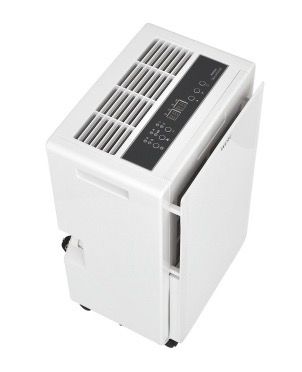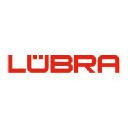30 Jun 2024
Wet room is 4.5m x 3.5m = 15.75m².
Looking to change my dehumidifier, which has been not working properly for a while now:
Suntec Wellness DryFix 20 Design.
Bought 10.09.2022 at 179€.
20 Liter/Tag
370 W
Wassertankkapazität 6,50 l
I has started to remove less moisture from the air and very rapidly show ice formations on the back of the unit. I had to turn it off and let it defrost for a few days before turning it back on. It would work for a little while, and then the same issue would happen again.
This would be at room temperature that should be adequate, ie 15-25°C.




"Luftentfeuchter mit beginnendem Kühlmittelverlust. Das Kühlmittel reicht nicht mehr, um den gesamten Verdampfer zu kühlen und gefriert im unteren Bereich. Oben bleiben die Kupferrohre warm. Der Kompressor wird sehr warm."
Dehumidifier Types
Here are the pros and cons of desiccant dehumidifiers vs. compressor dehumidifiers:
Desiccant Dehumidifiers (Adsorptionsentfeuchter)
Pros:
1. Effective at Low Temperatures: Desiccant dehumidifiers are highly effective in cold environments (below 15°C), as they do not rely on condensation, which can freeze up in compressor models  .
2. Quiet Operation: Typically quieter than compressor dehumidifiers, making them suitable for bedrooms and living areas .
3. Portability: Generally lighter and more portable due to the absence of a compressor .
4. Consistent Performance: Maintains consistent performance across a wide range of temperatures .
5. Warm Air Output: Emits warm air, which can help in drying clothes faster and slightly warming up a cold room  .
Cons:
1. Higher Energy Consumption: Can consume more energy due to the heating element used to regenerate the desiccant material .
2. Limited Capacity: Usually has a lower moisture removal capacity compared to high-capacity compressor models .
3. Higher Initial Cost: Often more expensive upfront compared to compressor dehumidifiers .
Compressor Dehumidifiers (Kondensationstrockner)
Pros:
1. Energy Efficiency: More energy-efficient in warm and moderate temperatures, making them cost-effective for long-term use in such conditions .
2. High Capacity: Typically has a higher moisture removal capacity, suitable for large spaces and areas with high humidity levels  .
3. Lower Operating Costs: Generally have lower operating costs in warmer environments compared to desiccant dehumidifiers .
4. Widespread Availability: More commonly available and often comes with a variety of features and sizes to choose from .
Cons:
1. Reduced Efficiency in Cold: Performance significantly drops in colder temperatures (below 15°C) as the coils can freeze up, requiring frequent defrosting  .
2. Noisy Operation: Typically noisier due to the compressor and fan, which can be disruptive in quiet environments .
3. Heavier and Bulkier: Generally larger and heavier, making them less portable and more cumbersome to move around .
Summary
• Desiccant Dehumidifiers are best for colder environments, quieter operation, and portability but consume more energy and have a higher initial cost.
• Compressor Dehumidifiers are more energy-efficient in warmer environments, have higher capacity, and lower operating costs but are noisier and less effective in cold temperatures.
Compressor Dehumidifiers
- Pros:
- Most effective at removing moisture from the air
-
Can operate at low temperatures
-
Cons:
- Noisy
- Energy-intensive
- Not suitable for small spaces
Desiccant Dehumidifiers
In German: "Adsorptionsentfeuchter"
Desiccant dehumidifiers are more effective in cooler temperatures compared to compressor-based dehumidifiers. They work by absorbing moisture through a desiccant material, which is then dried out using a heater.
How they work: absorb moisture from the air using a desiccant material.
What is a desiccant: a substance that absorbs moisture from the air.
About maintenance: they require more maintenance than compressor dehumidifiers. You need to replace the desiccant material regularly.
- Pros:
- Quiet
- Energy-efficient
-
Suitable for small spaces
-
Cons:
- Less effective at removing moisture from the air
- Not suitable for large spaces
The best dehumidifier in cold weather is a desiccant dehumidifier. They are more effective at lower temperatures than compressor dehumidifiers.
The best brands of desiccant dehumidifiers are Meaco and EcoAir.
Brands like Meaco, EcoAir, and De’Longhi offer models that meet these criteria. For example, the Meaco DD8L or the EcoAir DD1 CLASSIC MK5 are popular choices for such conditions.
Products
Aktobis WDH
Aktobis Luftentfeuchter WDH-725DG
30 Jun 2024 bought at 258 EUR with 4 years warranty (+2 years extra) & delivery.
225 EUR
Compressor
Dauerbetrieb: 320 W
3l tank
5°C - 32°C
"komfortables, einfach zu bedienendes Entfeuchtungsgerät zur Kellertrocknung und zur Unterstützung der Wäschetrocknung."

Official:

Entfeuchtungsleistung (Optimal): 25 Ltr./Tag (35°C / 90% r.F.)
Entfeuchtungsleistung (Standard): 20 Ltr./Tag (30°C / 80% r.F.)
Max. Leistungsaufnahme: 420 W (1,9 A)
Ø Leistungsaufnahme im Dauerbetrieb: ca. 320 W
Kondenstank: Ca. 3 Liter
Kompressor: Rotationskompressor
Kältemittel: R290
Geräuschentwicklung: Stufe 1: 48 db(A)
Stufe 2: 50 db(A)
Abmessung des Produkts (H/B/T): 590 x 360 x 240 mm
Gewicht: 13,2 kg
Einsatzbereich: 5°C - 32°C

Aktobis WDH-930EEW
339 EUR
Compressor
Dauerbetrieb: 335W
5.5l tank
5°C - 32°C

- Dehumidification performance of up to 40 litres per day + WiFi control (Tuya Smart)
- Electric hygrostat (LED) for regulating and setting the desired humidity + clear display (display) including current temperature display, actual humidity and status overview
- Timer function, for selecting the automatic operating time between 1-24 hours + suitable for continuous operation / continuous dehumidification
- Two fan / air circulation levels (low + strong) + automatic professional defrost function
- Equipped with a highly efficient rotary compressor (one of the most powerful compressors on the market) + power consumption of only max. 495 watts
- Humidity control from 30% to 90% + automatic function, i.e. the device switches off automatically including fan after reaching the target moisture content and also automatically switches on again when it gets wet!
- Removable condensation tank + connection option of a hose for endless drainage of condensate (hose is included)
- Operating warning light + absolutely maintenance-free. No separate or renewed coolant is required (closed circuit)
368 EUR on Amazon:
https://www.amazon.de/Aktobis-WDH-930EEW-Dehumidifier-Construction-Digital/dp/B096SQ1Q5K
Entfeuchtungsleistung (Optimal): 40 Ltr./Tag (35°C / 90% r.F.)
Entfeuchtungsleistung (Standard): 35 Ltr./Tag (30°C / 80% r.F.)
Modellbezeichnung: WDH-930EEW
Betriebsspannung: 220V-240V / 50Hz
Max. Leistungsaufnahme: 495 W
Ø Leistungsaufnahme im Dauerbetrieb:: ca. 335 W
Geeignet für Räume bis max.: 80 m²
Geräuschentwicklung: ca. 50 dB/A Ventilatorstufe 1
ca. 54 dB/A Ventilatorstufe 2
Kompressor: Rotationskompressor
Kondenstank: Ca. 5,5 Liter
Kältemittel: R290 (125g)
Abmessung des Produkts (H/B/T): 545 x 340 x 250 mm
Gewicht: 15 kg
Einsatzbereich: 5°C - 32°C


Aktobis Adsorptionsentfeuchter WDH-DS3 (Dessicant)
219 EUR
Desiccant
715 W
5l tank
1°C - 20°C

Entfeuchtungsleistung (Optimal): 10 Ltr./Tag (35°C / 90% r.F.)
Entfeuchtungsleistung (Standard): 9,5 Ltr./Tag (30°C / 80% r.F.)
Entfeuchtungsleistung (Kalt): 9,0 Ltr./Tag (8°C / 80% r.F.)
Kondenstank: Ca. 5 Liter
Abmessung des Produkts (H/B/T): 515 x 360 x 240 mm
Gewicht: 7,5 kg
Empfohlene Einsatztemperatur: 1°C - 20°C
Ø Leistungsaufnahme im Dauerbetrieb:: ca. 715 W

Lübra
Swiss made, professional quality but expensive.

Other brands
Trotec, Meaco, EcoAir, De'Longhi
